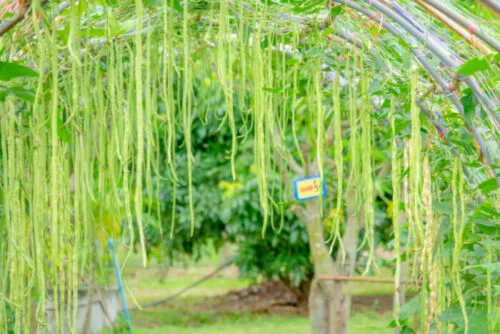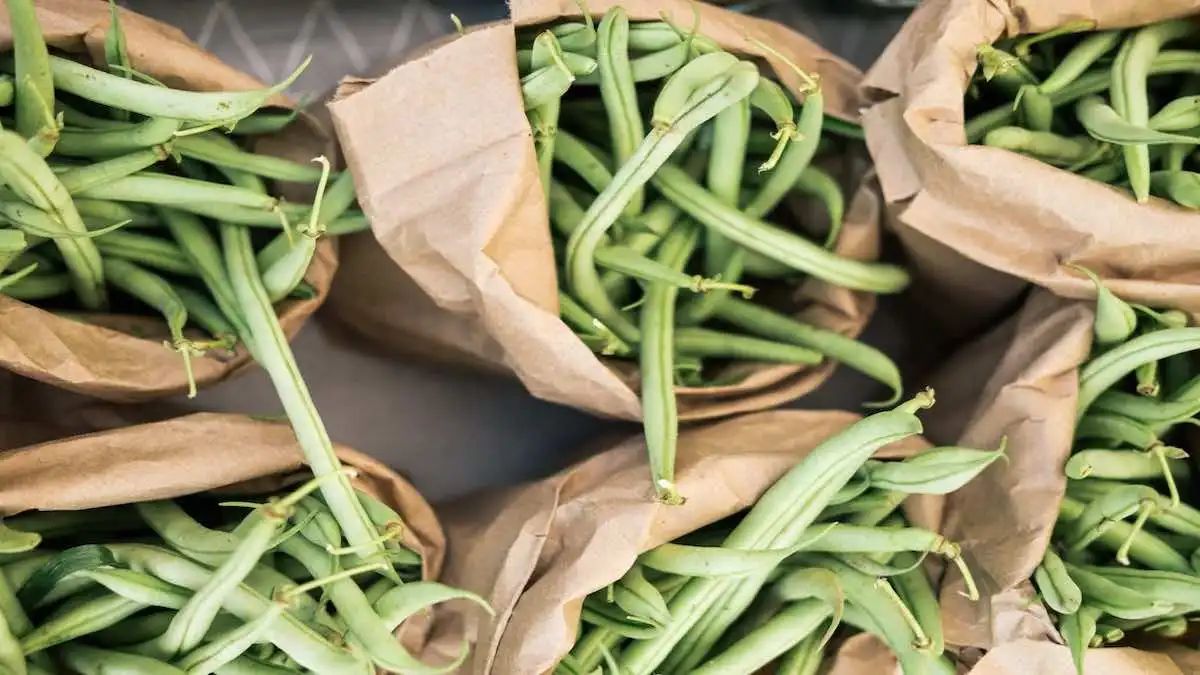Table of contents
Snake Beans Growing Zone
Snake beans growing has long been practiced in Asia. Indeed snake beans probably originated in South China. They do enjoy warmer, humid climates and consistent rainfall. Consequently, this makes them perfect for the tropics!
There are a number of varieties of snake bean. We have looked for varieties that are more suitable to our warmer, wetter climates. Hence one of the best varieties for the tropics is Green Pod Kaohsiung.
The tropics are the best zone for growing snake beans as they love the heat and humidity.
Snake Beans Growing Season
You can grow snake beans all-year-round in the tropics. Indeed they are one of the best vegetables to grow during the hot and humid tropical ‘wet season’. They thrive at this time of year, when some other veggies wilt under the heat.

Snake Beans Growing in Australia
Snake beans will grow in the tropics as well as the sub-tropics. They need temperatures above 25°C for fastest production. Growth will slow noticeably at temperatures lower than 15°C.
Location and Soil
These beans are excellent climbers and can be positioned to easily crawl over shrubs, up a trellis or even up a fence.
Find a sunny location to plant in. They love a sunny location and extra water, especially during the ‘dry season’.
Plant in well draining soil. Snake beans can tolerate slightly acidic soils, however they prefer a soil pH of between 5.5 and 7.5.
Snake Beans Growing from Seed
It is easy to grow snake beans from seed. Simply implement the following follow steps:
Time needed: 5 minutes
How to grow snake beans.
- Choose a location.
Find a sunny location to plant in.
- Sow seeds
Sow your seeds about 1cm (0.5in) deep in damp soil and about 30cm (12in) apart.
- Germination
Seedlings should emerge between 10 and 21 days after planting.
- Water
Make sure your plant is in full sun and give it plenty of water. This plant need to water regularly. While it depends on the weather, in the tropics you will hardly need to water during the monsoonal wet season.
- Harvest and Succession
If you want a continuous harvest throughout summer, plant seeds every 4 to 6 weeks.
Growing Snake Beans in Pots
We suggest growing in pots or containers. You will still need a trellis and to care for your plants.
Fertilising
Your beans will benefit from extra organic matter. We add a rich compost before planting. In addition, a liquid organic fertiliser rich in nitrogen applied once a month is a great way to feed your snake beans on an ongoing basis. Consequently, this will give your plant a nice growth spurt.
Watering
You must water during the dry season. However your plants will really enjoy the wet season, provided the soil is well drained.
Pests and Diseases
Common pests and diseases include rusts, mildews, viruses, fungal diseases, aphids, bean flies, caterpillars and mites. However, regular application of ‘white oil’ can help address these pests. Indeed white oil is an effective organic pesticide that you can make at home.
However, in recent years neem oil has become more popular as an organic method to control a variety of pests. It is sustainable and highly effective when applied according to directions.
Snake Beans Recipe
The use of snake beans in cooking is as diverse as most cooking greens, however it does lend itself to asian inspired dishes and is delicious simply tossed in a pan with soy sauce, ginger and garlic.
Snake Beans Benefits
The best part of snake beans growing, is eating the beans themselves. Indeed they are eaten fresh or cooked. Consequently, they are used in salads, eaten with rice and added to stir-fries and curries.
Health Benefits
Weight Loss
A 100 gram serving contains just 47 calories. Hence this is truly one of the low-calorie vegetables. The fibre also helps make you feel ‘full’ and is highly effective for weight loss.
Fibre
The soluble and insoluble fibre in these beans is good for your digestive system. Consequently, they are a good vegetable to add to your diet if you are suffering from constipation.
Immune System
In addition snake beans contain a high amount of vitamin-C, which is good for you. After all, studies show vitamin-C can help build immunity to infections, assists in maintaining blood vessel elasticity, and can help some people to combat certain cancers.
Antioxidants
This vegetable also contains important minerals, including iron, copper, manganese and calcium. So the body uses manganese as a cofactor for the important antioxidant enzyme, superoxide dismutase.
Prebiotics
Finally, snake beans are a good prebiotic food. Hence, this prebiotic is fibre passes through the GI tract undigested and stimulate the growth of good gut bacteria.
Indeed with all these benefits, you should start snake bean growing now!
Other Tropical Vegetables
- Capsicum
- Cucumber
- Eggplant
- Jicama
- Kangkong
- Malabar Spinach
- Pak Choi
- Perpetual Spinach
- Pumpkin Growing
- Sweet Potato
- Tatsoi



Comments
5 responses to “Snake Beans Growing Guide”
[…] Snake Beans Growing […]
[…] Snake Beans […]
[…] Snake Beans Growing […]
[…] Snake Beans […]
[…] Snake Beans […]